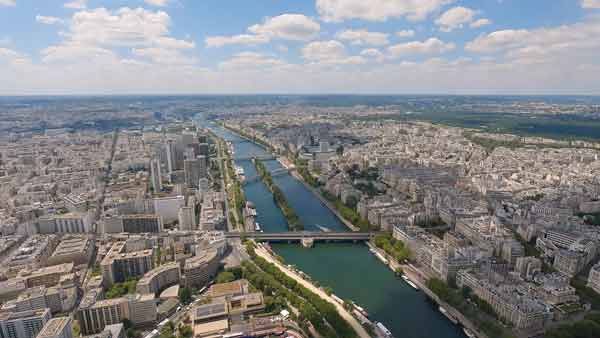What immediate associations does the phrase “Eiffel Tower” evoke in you? Personally, I immediately have a panoramic view of an “A”-shaped high structure and the melody of “La Marseillaise” in my head. Because this is the business card of France, its famous symbol, the name and image of which are immediately transported to the very heart of Paris, to its Champ de Mars, located on the left bank of the Seine.
Where did the Eiffel Tower come from?
In short, it was built in 1889, right at the entrance to the territory where they were going to create an exhibition on the 100th anniversary of the storming of the Bastille. The art object was supposed to be disassembled into beams later.
However, Eiffel, the author of the project, signed an agreement with the authorities of Paris two years before the end of construction to ensure that they would provide the future tower for the personal use of the chief designer for 25 years (the initial version was for 20 years after which there would be mandatory dismantling). The construction of the tower cost almost 8,000,000 francs, but this gigantic amount was paid off before 31 October 1889!
The instant success of the high-rise building was stunning: more than 2,000,000 people visited it less than six months after construction was completed.
The enterprising Alexander Gustave Eiffel, who became a super popular person, had an extremely profitable object for use: people from all over the world began to flock to Paris to review the new product. It must be admitted that the “father” of the Eiffel Tower and part-time professional designer of metal structures was very modest and never called his grandiose brainchild by his own name. He simply said: “300-metre tower.”
What we don’t know about the Eiffel Tower
A pair of elevators was installed in 1899 in the eastern and western pillars and it is still functioning. True, the thrust of the hydraulic pumps was replaced by electricity, but the switched off pumps were left in place and are available for inspection as a historical technical object.
Intelligent Paris protested against the construction of the hateful column of screws and iron. His city hall was bombarded with requests and complaints from the creative elite (the petition was signed by more than 300 people!) who demanded that the daring project be cancelled. Writers, poets, composers and artists seriously feared that the miracle machine would ruin the architecture of the capital. They called the Tower back then:
-
a”chimney”.
-
a disgusting shadow stretching over the city like an inkblot.
-
monstrous and useless.
-
ridiculous, etc.
To prevent the Fuhrer, Adolph Hitler, from climbing the Eiffel Tower when he arrived in Paris in 1940, unknown persons broke the elevator.
Top 10 facts about the Eiffel Tower
-
This is the most popular man-made attraction in the world, accessible daily and to visit you need to pay 16 euros for the second tier and 25 euros for climbing to the peak.
-
The Eiffel Tower is the undisputed record holder for the number of photographs taken by tourists, journalists and other professional “hunters” of successful shots.
-
The symbol of France was built for a different purpose: as a temporary entrance arch to the World’s Fair.
-
The exact height of the building is 330 metres.
-
The main material of construction is steel.
-
Gustav Eiffel did not create the design of the tower, but bought a patent for it from the authors: M. Keshlen (drew the sketch) and E. Nugier (completed the unusually accurate drawings).
-
The tower was built in record time: it took exactly two years, two months and five days.
-
300 workers worked on the construction of the “colossus”.
-
18,038 bits of hardware, assembled from 2,500,000 rivets, were used for the ready-to-use facility.
-
Not a single worker died during the continuous construction period! Eiffel personally monitored the safety of the work.















